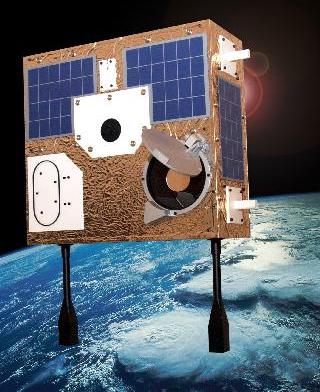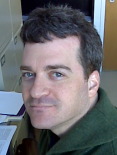MOST proposal accepted
Jan 19 2009, 12:16
John Monnier informs me that our MOST proposal to observe Altair and Rasalhague has been accepted. These are both rapidly rotating A stars, known from interferometry to be oblate due to the centrifugal force. The objective of the observations is to look for δ Scuti-like pulsations (Altair is already know to pulsate), and to use the pulsations to place constraints on the internal rotation.
This will involve my developing a new pulsation code that can handle differential rotation — quite an undertaking, but something I've been meaning to do for nearly a decade now. The new computer recently purchased by the Theory Group will be the perfect platform on which to run the code; so, all that's required now is a few months of furious programming.
Getting dirty with CUDA
Jan 18 2009, 09:48
I've finally been getting around to analyzing the MOST observations of σ Ori E. These span 3 weeks and comprise around 25,000 individual photometric measurements — a very impressive dataset. I'm using the CLEAN algorithm (Roberts et al. 1987) to derive the Fourier spectrum; the usual Fast Fourier Transform (FFT) approach can't be used, because the time sampling isn't uniform. The first part of the algorithm involves calculating the dirty spectrum, and can be quite computationally expensive — typically scaling as N^2. So, partly as a learning exercise, I've coded up a CUDA version to run on the new Tesla unit inside Tedesco.
Initial results seem quite impressive; it takes around 50 milliseconds 60 seconds to calculate the dirty spectrum for the whole MOST dataset. There are still a few accuracy issues to be addressed, but using the Tesla looks like a very promising approach to analyzing large time-series observations efficiently.
David Cohen is visiting
Jan 13 2009, 11:41
David Cohen is visiting for a few days, having flown over from Swarthmore College on Sunday. We're working on a variety of topics, including modeling the X-ray line profiles of porous massive-star winds, and investigating the two new magnetic B stars discovered by Petit et al (2008). It seems one of these stars may be a helium-strong star, like σ Ori E; and both of them show measurable X-ray emission.
Geochron ported over
Jan 7 2009, 13:03
I've ported my geochron over from my old (and soon to be deleted) UCL website. With a little poking, it seems to be working fine; but any reports of breakage would be welcomed.
Tesla C1060 installed
Jan 6 2009, 23:00
Through their Professor Partnership Program, NVIDIA have very kindly lent me a Tesla C1060 Computing Processor This is basically a graphics card without the usual monitor socket; it contains 240 separate cores optimized for SIMT parallel computation.
My plan is to use the Tesla to speed up interpolation of specific intensities in pre-computed grids (although there are other potential applications that are catching my eye). After some creativity with power cables (the beast requires 2 extra PCI Express power connections), it is now installed in tedesco, the 8-core workstation under my desk. Preliminary benchmarks indicate a bilinear interpolation throughput of around 19 billion interpolations per second. Which is nice.



